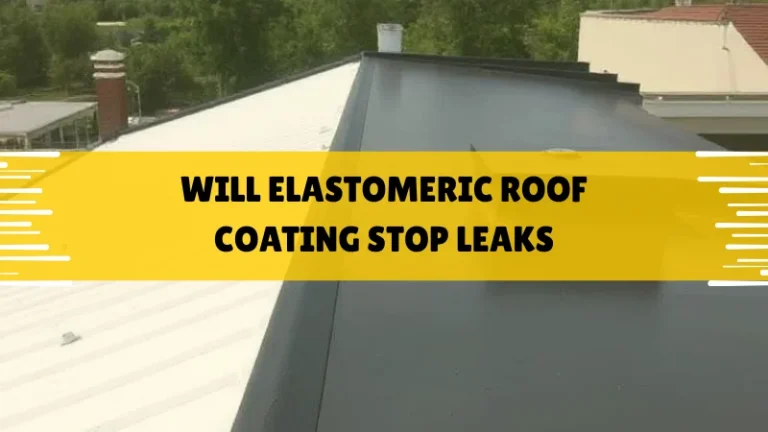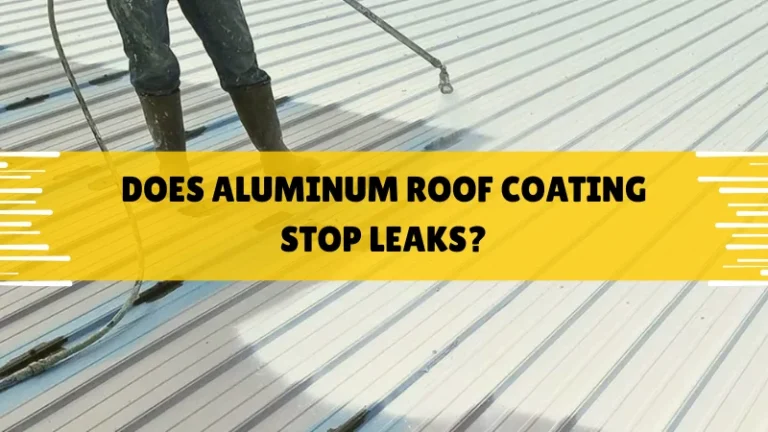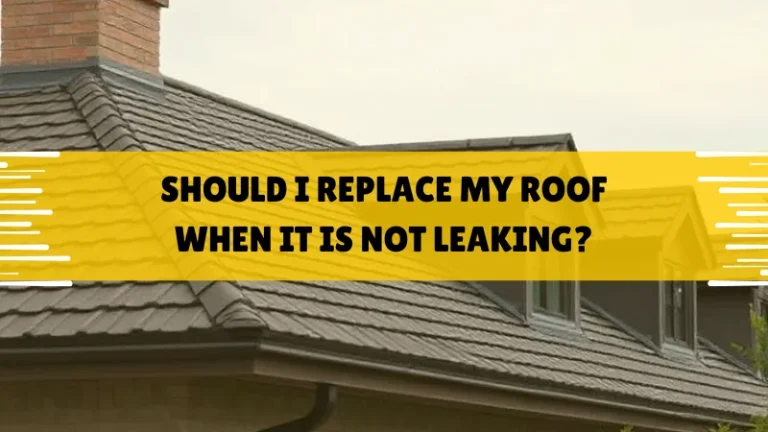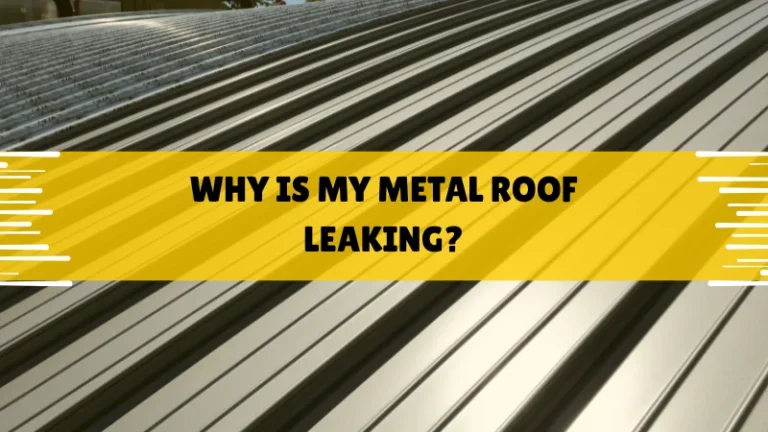How To Fix RV Roof Leak?
A great camping trip can be ruined by a leak in your RV roof. Water seeps into small cracks, making walls damp or moldy, which can compromise your RV’s safety and comfort. Knowing how to fix RV roof leak is essential for any RV camping enthusiast, as water can infiltrate after heavy rain. The good news? You don’t need to be a professional to tackle this task. With a few simple tools and a clear plan, you can prevent leaks and keep your RV in top shape.
You do not have to be a professional to approach this task. You can prevent the drip with a few simple tools and a good plan. As an illustration, inspecting your roof is a way of early detection of issues. Any RV camping lover is aware of leaks. Water may enter in after a heavy rain. So, we will step by step through the process of repairing an RV roof leak.
First Things First: What is your RV Roof Material?
Your RV roof may be rubber, fiberglass or metal. Repairs are different in each type. An example is the rubber roofs that are easy to tear, yet they are extremely widespread.
Verify the material in the RV manual. Special sealants are required in rubber roofs such as EPDM or TPO. In the meantime, fiberglass is hard but may break when bumped.
Being aware of your roof type is time saving. Where water enters, metal roofs may rust. Therefore, it is all about choosing the appropriate repair product.
Spotting the Signs of a Leak
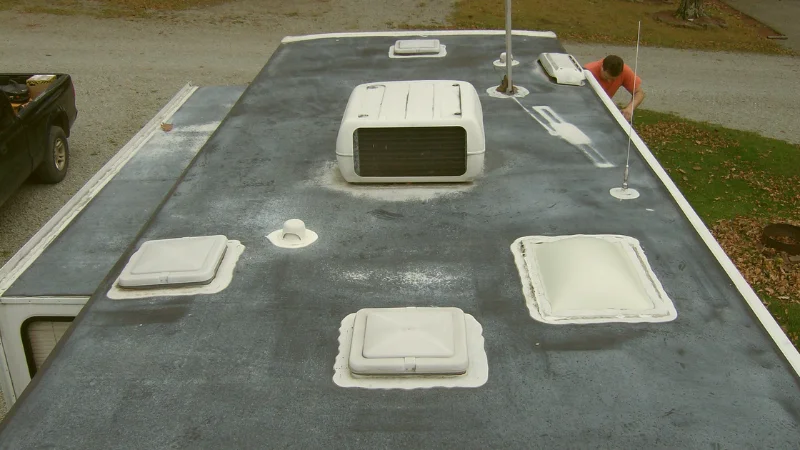
The presence of water on the ceiling of your RV is screaming. Seek brown or yellowish spots around vents or corners. And a damp odour means moisture somewhere.
Go out and inspect the roof of any cracks or bubbles. Rain puddles demonstrate the location of the water pools. As an illustration, loose seams in the skylights tend to allow water to penetrate.
Feel in cabinets to check the wet spots. Bowed wood or blistering boards are large indicators. Thus, the leak can be located quickly by checking both indoors and outdoors.
Tools and Materials You’ll Need
Take a good ladder and a pair of gloves. You will also need a hose to check on leaks in future. These fundamentals simplify the task.
To repair, take Dicor sealant or Eternabond tape, depending on your roof. The area is cleaned with a brush, mild soap, and rags. In addition, a caulk gun makes the application smooth.
Have a screwdriver to tighten loose parts. The utility knife cuts tape neatly. Proper preparation speeds up your RV roof leak repair NJ, ensuring a quick and lasting fix..
Step-by-Step: Fixing an RV Roof Leak
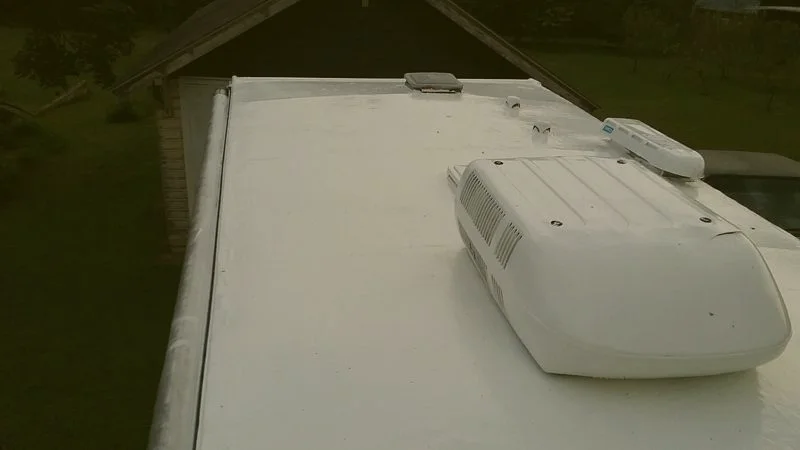
Begin on a sunny day and keep it dry. These steps are to be followed to a good fix. And never forget to be safe and secure your ladder.
Each step builds on the last. In a hurry, the repair may be not permanent. An example is that cleaning well causes the sealant to adhere.
Step 1: Find and Clean the Area.
Crawl on the roof, searching cracks or holes. Inspect vents, seams, or antennas. Thereafter, use tape to label any damage to keep it orderly.
Wash the spot with soap and water. Wash away all dirt and old sealant. But be sure it is quite dry before proceeding.
At times the leaks go farther than you can see. Wipe a larger surface than the crack. In so doing you detect weak areas.
Step 2: Prepare the Surface to be repaired.
Sand rough areas to make them smooth. This assists the sealant to cling. But do not sand too much and scratch the roof.
On certain roofs it is best to apply a primer. It makes the repair stronger. Then wait till it is dry like the label.
Tighten loose screws or loosen them. Use a filler product to fill small holes. Prepping right, therefore, establishes a permanent fix.
Step 3: Apply Sealant or Tape
Select a sealant or a tape that suits your roof. In the case of rubber roofs, use self-leveling Dicor caulk. Apply it all over the area of damage.
When Eternabond tape is used, press it down. Ensure that it extends by an inch over the crack. And also, quickly remove any air bubbles.
Test the repair with a hose. Spray water to mimic rain. In this manner, you will be able to tell whether the RV roof leak has disappeared.
Step 4: Let It Cure and Recheck
Allow the sealant to dry at least 24 hours. Look at the instructions of the product at the precise times. In the meantime, store the RV in the dry.
Inspect the area after curing. Seek gaps or areas of weakness. To be on the safe side, add additional sealant.
Conduct another test of water at different angles. No drips indoors, you done it right. Rechecking, then, makes the fix permanent.
When It’s Time to Call a Pro
Large spills or extensive destruction require professional work. Pros possess the equipment to repair difficult areas. As an example, extensive cracks are difficult to deal with individually.
In case of rot or electrical problems, halt and call somebody. Water near wires is risky. Certified RV technicians, therefore, are aware of how to repair it safely.
Compare a couple of pros. Inquire about their experience with RVs. In this manner, you have a good RV roof leak repair.
Final Thoughts On How To Fix RV Roof Leak?
Repairing an RV roof leak is a good feeling when it is done correctly. You save and keep your RV in readiness. All you have to do is the right tools and time.
Frequent examinations avert headaches in the future. A few minutes work translates to increased fun on the road. Keep your RV roof in check, therefore.
Got a leak story? Share it with other RV owners. Your suggestions would assist another person in repairing his/her RV roof leak as well.



